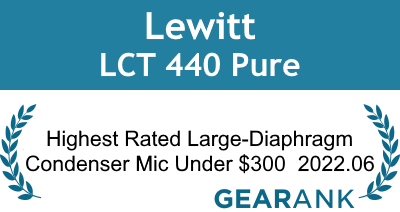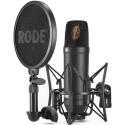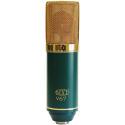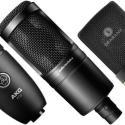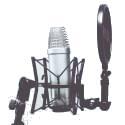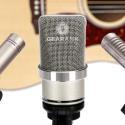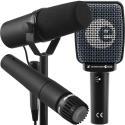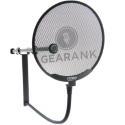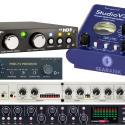Lewitt LCT 440 Pure Review: Large-Diaphragm Condenser Microphone
Street Price:
Manufacturer:
Product Links:
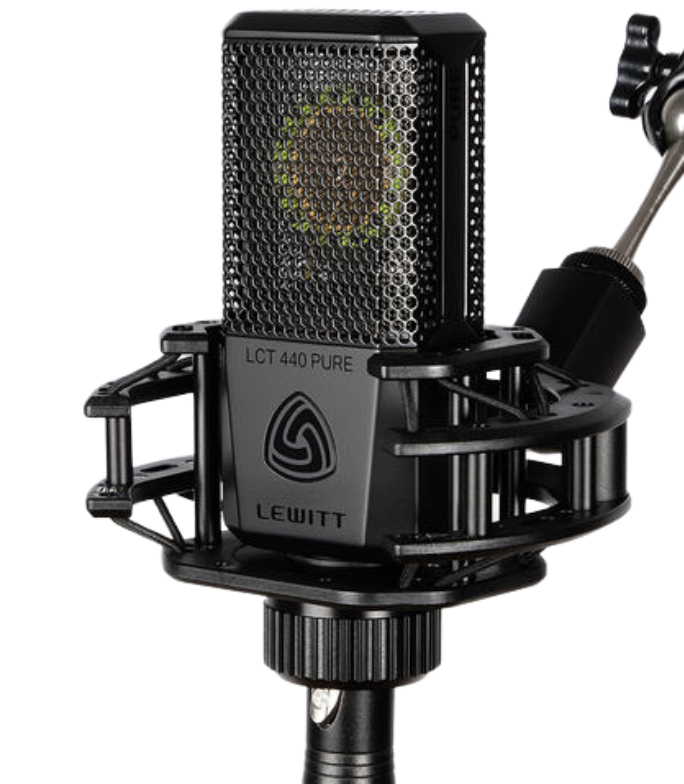
Gearank High Notes
Specifications
- Type: Condenser
- Polar Pattern: Cardioid
- Frequency Response: 20 to 20,000 Hz
- Impedance: 110 ohms
- Max SPL: 140 dB
- Applications: Great all-rounder from vocals, acoustic guitar to drums
- Power Requirements: 48 V ± 4 V
Pure and Clean
With so many vintage microphone clones out there, Lewitt stands out as a forward-thinking company that focuses on modern sounding mics. With no additional features like pads and filters, does the 440 Pure live up to its name or is it too much of a compromise?
I have a confession to make: I am addicted to microphones.
I love hearing the differences between different mics and how they capture voices and instruments. I've had the pleasure of mixing tracks recorded with some of the most expensive mics in the world and it doesn't help curb this obsession of hearing the subtle differences between a Neumann U47 and an AKG C12.
For those who aren't attuned to the subtle, almost inconsequential differences between the highest tier microphones, it's often enough to get a microphone that just makes your production process easier; something that you can just put in front of a singer or a guitar cab, hit record and have a great sound.
The demand for a more affordable, project studio oriented product from Lewitt saw the release of the LCT 440 Pure. A distillation of their design philosophy into only the most essential pieces. The 440 Pure is a cardioid only LDC with no other features. On paper, this might not sound like much to offer, but the mic comes in an attractive package of both a shock mount, and 2 pop filters (foam and metal mesh).
Because of the streamlined approach to the mic, price is kept low while the capsule, enclosure and circuitry remain top standard.
That's the design philosophy behind the LCT 440 Pure according to Lewitt. It employs the same capsule as their flagship microphones but distilled into a simple, single pattern mic. The result is surprisingly versatile especially with a max SPL handling of 140dB SPL for 0.5% THD, it won't need a pad at all for some cases.
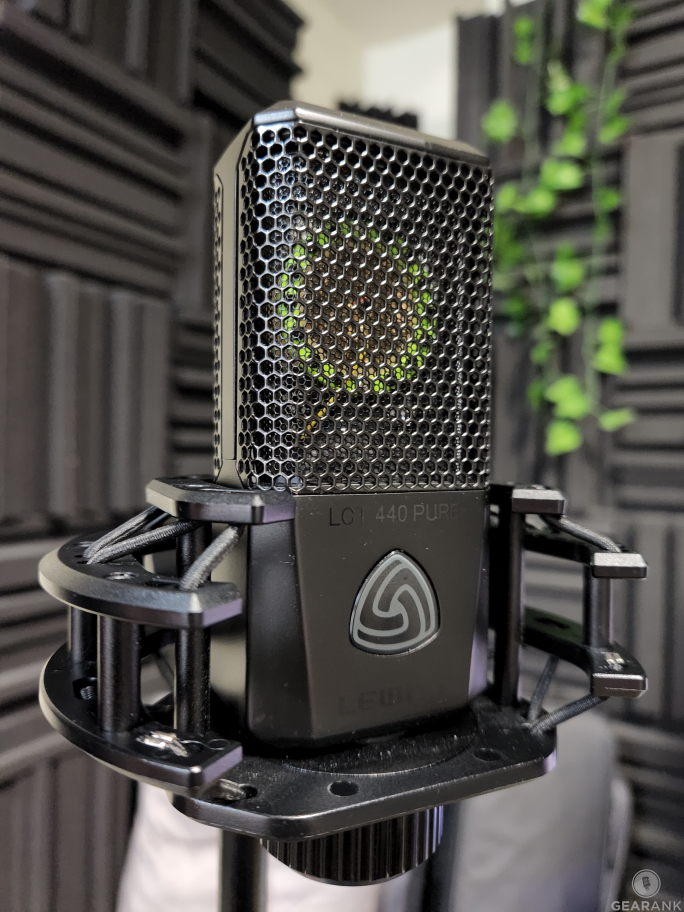
Lewitt Audio was founded by Roman Perschon out of a desire to make innovative products that don't just rehash older designs from audio yesteryear.
It definitely sounds different from other mics in its class like the Aston Origin and Rode NT1. With so many glowing reviews for it, I was surprised that no one has made the comparison to top-tier, very expensive microphones yet.
It has a neutral midrange with a sweet, airy high end that you can only get from classics like the Telefunken ELA M 251e and the Sony C800g (with some examples of the 251e having slightly more harmonically rich low mids vs the c800g). I have been fortunate enough to record audio with these mics and I can easily say the 440 Pure shares the same "pop vocal" sheen that the aforementioned mics offer. What it lacks compared to these mics is the subtle harmonic content that gives a feeling of "compression" on specific frequency ranges.

The microphone's design is bears a fleeting resemblance to those of Austrian mic manufacturer AKG. It's worth noting that Lewitt Audio was formed by an alumni of AKG, Roman Perschon.
I make these comparisons easily but bear in mind that the Telefunken ELA M 251e and Sony C800g both come in at around $10,000 each! For a Sub-$300 mic to sound even remotely close to these two mics for comparison opens up a lot of top tier tonal possibilities to home and project studio owners who can only dream of these big studio classics.
Voiceover and Singing examples recorded with the Lewitt LCT440 Pure*
I would love to pick Roman Perschon's brain about how they tweak the tonalities of their microphones someday because I feel it's no coincidence that the LCT 440 Pure sounds eerily similar to these sought after mics.
One handy thing is that the pop filter is small enough to not obscure vision for singers or speakers reading from lyrics and scripts.

The included pop filter secures to the shockmount with magnets and doesn't obscure the singer or speaker's vision.
I should point out that some people find the mic too sibilant; a trait it shares with the two expensive mics I keep mentioning. If you're looking for Neumann smoothness, look elsewhere as the LCT440 Pure has a very modern and airy sound designed to cut through in a modern pop mix. Likewise, if you're in the market for a mic that has multiple patterns and pads, Lewitt's higher end models begin to introduce those features so check those out.

The "stem" of the microphone houses the XLR output jack. This is the part that slides into the proprietary shockmount and friction-locked into place.
Many people who have never worked with high-end microphones like the Telefunken ELA M 251e and Sony c800g might not understand what makes the Lewitt LCT440 Pure's timbre and tonality so great. While it doesn't have the harmonically complex midrange of the 251e or the extreme high end detail of the Sony C800g, It fits well within their sound signature at a price most of us can afford.
Acoustic Guitar example recorded with the Lewitt LCT440 Pure
On the other hand, where sibilance might be a problem for some singers, the added treble air works wonderfully with acoustic guitars, especially darker sounding ones. My acoustic is a very dark sounding parlor by Tyma and I've always had trouble recording it because it gets boomy if I play it too energetically. The Lewitt shifts focus into the more delicate treble registers of the guitar without muddying up the low midrange. This makes it excellent for both solo acoustic recordings or recordings that are meant to fit in larger mixes and compositions.
Cons
- Cardioid only
- Can get sibilant
Pros
- Great neutral midrange with a silky smooth high end usually only heard on ultra-expensive microphones
- High quality bundled accessories
- Low self-noise makes it great for recording quiet sources and room tone
- Excellent for pop vocals, acoustic guitar or anything where detail and brightness are desired
Overall
If you're looking for an excellent pop vocal mic or bright condenser to capture nuanced acoustic guitar performances, the LCT 440 Pure definitely brings that big studio sound without the big studio price.



